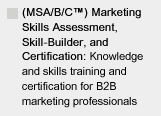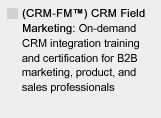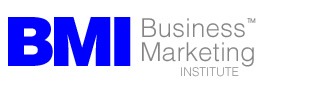MAKE SURE YOU CONTINUE TO RECEIVE EACH ISSUE OF TUESDAY MARKETING NOTES—CLICK HERE TO RENEW YOUR FREE SUBSCRIPTION (IF YOU'VE ALREADY SUBSCRIBED, NO NEED TO RE-SUBSCRIBE)

How to Use Existing Content in B2B Demand Generation Programs
Ardath Albee, Marketing Interactions
Many of my clients don't have content suited for all stages of the buying process. Some of them have lots of content, but are stumped about how to use it effectively. So they think they need to start from scratch. Sometimes this is true, but often there's no reason you need to reinvent the wheel. When it comes to designing nurturing and demand generation programs, it's smart to begin with your goals in mind.
This article is inspired by a comment left on Brian Carroll's blog post, Lead Generation Checklist Part 1: The Mindset: Conversations - not campaigns.
Commenter Barrett Coakley posted:
"Great idea. For our coming FY (July-June) we are trying to generate awareness of who we are and how we can help. Past has been more about product announcements as we released a number of products last year.
Now the goal is to show how these products can be a solution.
We have a ton of content, it is just hard to determine how to use it in a systematic way. How do you design a coherent and consistent program with a plethora of content?"
This is a great question. I'm really glad to see the shift from product announcements to demand generation. At least that's how I'm reading this.
Here's what I'd suggest to get you started:
Set Goals
It goes without saying that if you don't know what you want to achieve, you likely won't get anywhere. I see a few goals in your comment:
• Generate awareness
• Show how you can help
• Prove your products can be a solution
All good.
Start with that last one and work up to tighten your focus:
• What value does the solution provide that the stand-alone products don't?
• Who will gain the most benefit from that value?
• How does it help them? (what's the problem-to-solution scenario?)
• What's the urgency level of solving the problem?
• What successes have your customers achieved using the standalone products or several in combination that can be rolled into evidence in support of the value?
• Who do you want to know about you that doesn't?
• Where are they? (how can you reach them? e.g. lead database, referrals, social communities, industry portals, events, etc.)
And finally, what kind of process do they go through when they buy your type of solution? What do they need to know to make an informed decision?
Evaluate Your Content
Create a content inventory, if you don't have one. Include the following:
• Title
• Description
• Type (educational, expertise, evidence)
• Format (article, white paper, video, customer story, etc.)
• Buying stage (what question would your buyer be asking that a specific content resource would answer? Is it an early stage question? Mid-consideration or final validation question before purchase?)
• Distribution - is it publicly available or reserved for nurturing? How is it being used today?
• Refresh - is it current, or does it need to be updated?
Based on what you see, are there any gaps or questions your prospects may have that your current content doesn't answer? How does your content play against the work you did during goal setting?
Often I find that content is weighted more toward the product side and less toward the education and awareness side. This is natural due to your focus on selling your products. But it's imperative that your content work across the buying process, matching answers to questions your buyers have to resolve so they can make the best decision for their companies.
Identify gaps and make notes about what may be needed to fill them. This could be re-purposing some existing content or developing some new resources to add to your mix. Also pay attention to segmentation. If your solution solves multiple problems, it's wise to assign content to the appropriate storyline.
Next, Define Context
Look at the style of your content. Is it written to address buyer's needs or as a showcase for your company? Remember that you know a ton of stuff your buyers don't. Make sure that your content isn't making leaps your buyers won't follow. The context will evolve as your content builds the value story. So make sure your content does, as well. Most importantly, make sure there's a takeaway for your prospect from each piece of content they view.
Create Connection Points
Content should not be standalone. It's really important to determine what someone who just read one piece might be interested in next. You need to create a plan to guide your prospects to more content on a topic they've expressed interest in. You need to build the story over time.
It's important to remember that if you bring your prospects to a content article on your website without offering any extension opportunities for engagement, you've missed an opportunity. Make sure your navigation and content groupings are clearly related to solving a problem.
Having a lot of content is nice. But, if it doesn't work together to help your buyers learn what they need to know to buy, it's just text on a Web page. Examine the way your content is displayed and determine how to improve the orientation for your buyers.
There's a lot more involved, but once you get this far, you'll have a great foundation for creating a framework that incorporates the content you have with the demand generation programs you need. And your buyers will thank you by making purchase decisions in your favor.
Ardath Albee (Ardath@marketinginteractions.com) is an expert at creating contagious content and e-marketing strategies that engage prospects-from initial attention until they're sales ready. She has a unique ability to develop content strategies that work hand-in-glove with overall corporate and product positioning to deliver hard hitting e-marketing programs and tools that compel customers to buy. Ardath helps her clients generate more opportunities by optimizing how they leverage marketing automation and CRM technology investments. Her clients include Cisco, LANDesk and Silicon Graphics. Visit her website and industry-leading blog to learn more: www.marketinginteractions.com.








